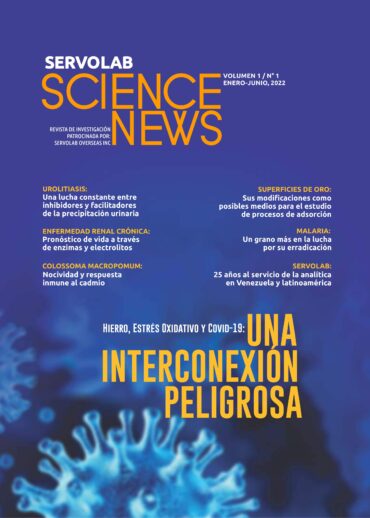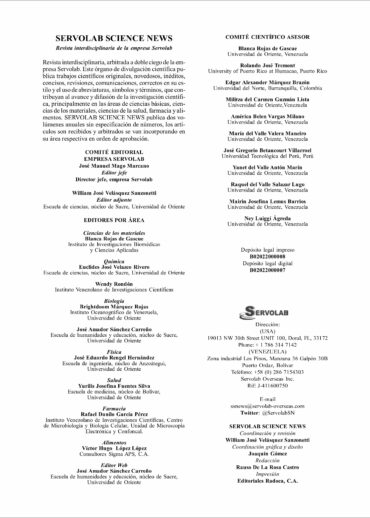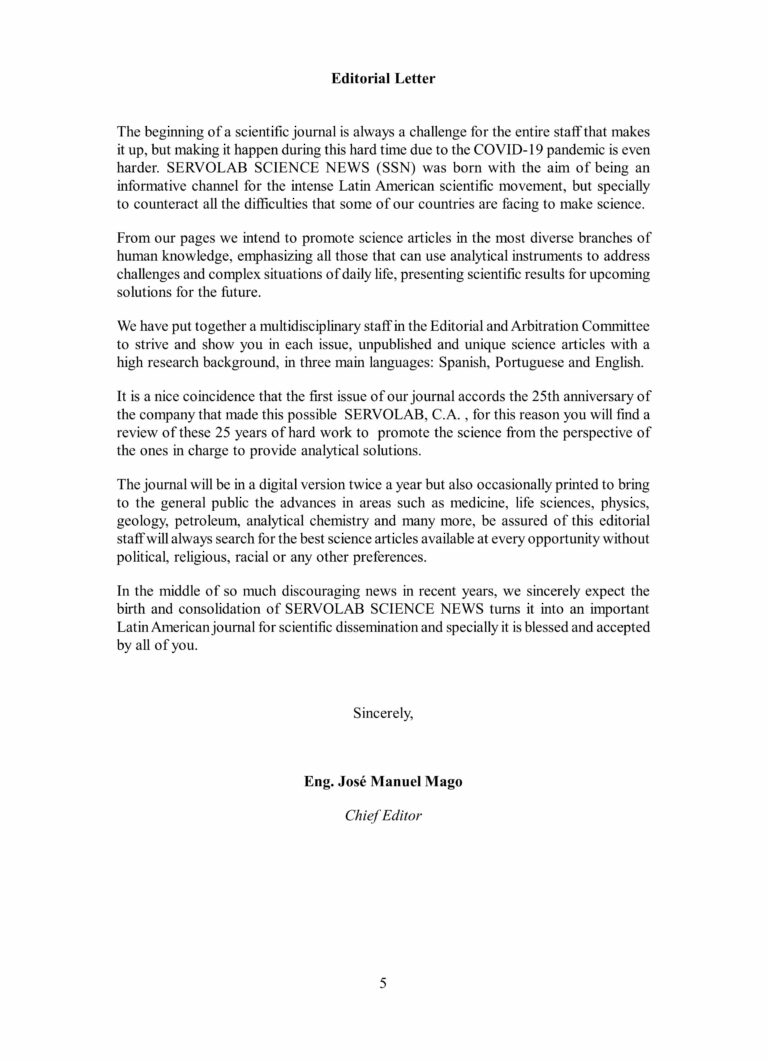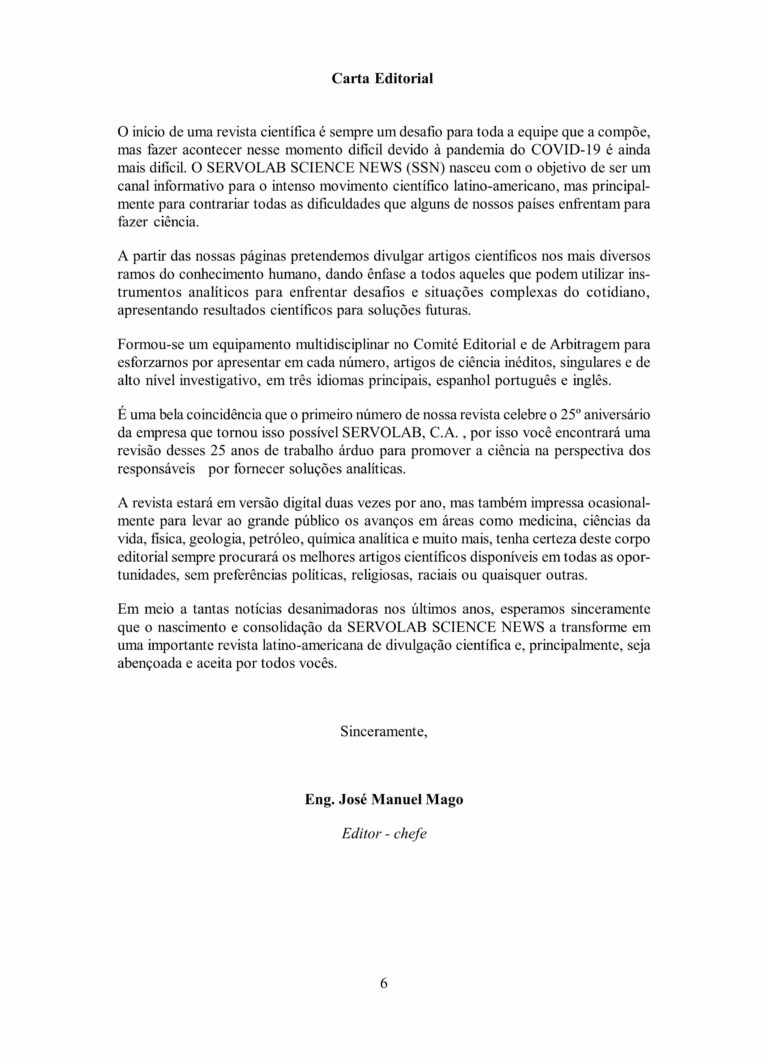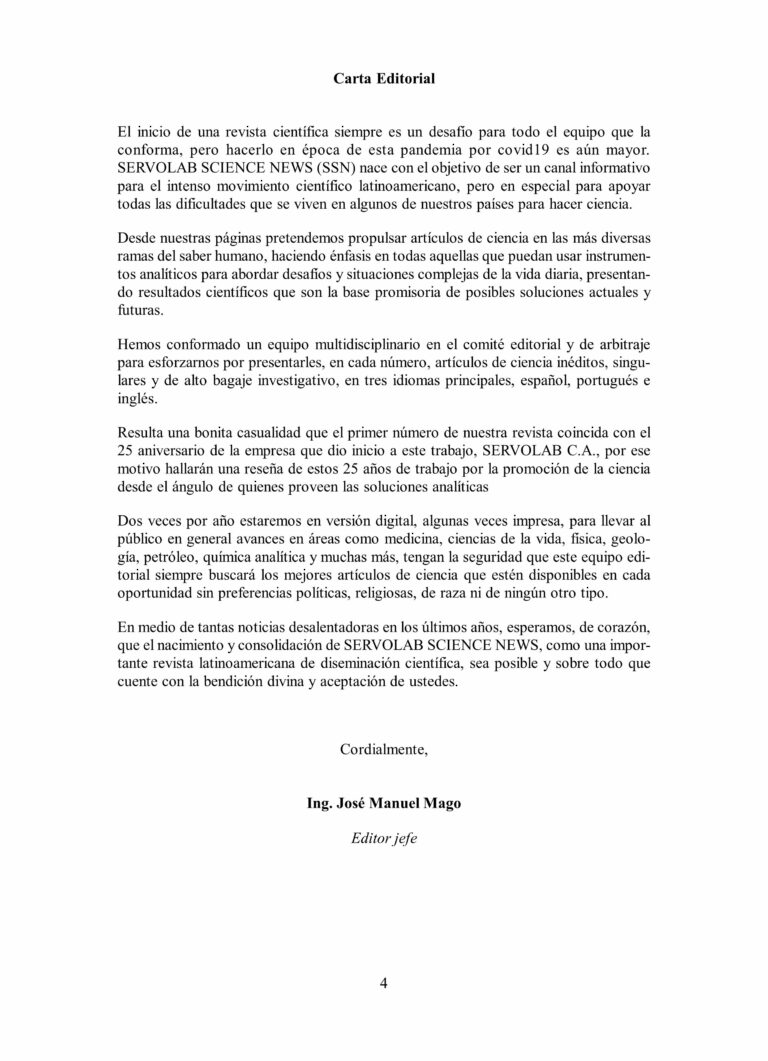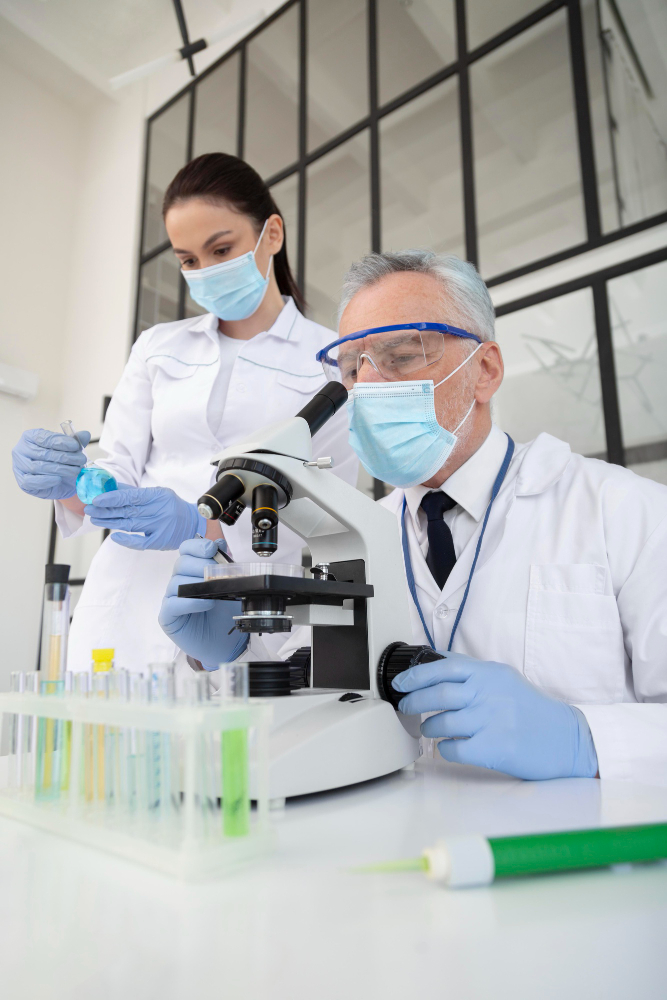Vol. 1, N° 1 (2022) Janeiro-Junho
- Inicio
- Revistas científicas
- Vol. 1, N° 1 (2022) Janeiro-Junho
Vol. 1, N° 1 (2022) Janeiro-Junho
Leia mais sobre o
Publicado: (2022)
IRON, OXIDATIVE STRESS AND COVID-19: A DANGEROUS INTERCONNECTION
RAQUEL SALAZAR-LUGO¹
The World Health Organization (WHO) named Covid-19 to disease produced by a virus from the coronavirus family that has become the largest pandemic that humanity has experienced in the 21st century, due to its spread on all continents and its health, economic and social implications in all countries. Clinical and laboratory data indicate the strong commitment of iron and the oxidative state of organism in the progression of Covid-19. Iron and oxygen are interconnected in the life in a fine relationship that generate reactive species which are used for cellular signaling processes and for the expression of genes. A balance maintained by a robust antioxidant biochemical machinery of the cell. Viruses also need iron for their efficient replication since they depend on the cell for their continued existence because viral replication is associated with the enhancement of cellular metabolism for the construction of the proteins and viral genome. Viral infections maintain their replication cycle by promoting a pro-oxidant environment in the host cell and, SARS-Cov2 appears to be extremely efficient in promoting this oxidative environment as evidenced by laboratory findings in Covid-19 patients. In this review are discussed the findings that relationship the oxidative stress and iron metabolism as two key factors in the severity of Covid-19.
Key words: Covid-19, oxidative stress, iron, glutathione, thiols, total antioxidant capacity.
VARIATIONS OF ELEMENTS AND INHIBITING AND FACILITATING COMPOUNDS OF CRYSTAL PRECIPITATION ACCORDING TO TYPE OF CALCULUS IN UROLITHIC PATIENTS
WILLIAM JOSÉ VELÁSQUEZ SANZONETTI¹, AMÉRICA BELÉN VARGAS MILANO¹, ALBERTO JOSÉ GARCÍA GARCÍA¹, DIXSON JOSÉ VELÁSQUEZ SANZONETTI¹, LUIS ADELMO MÁRQUEZ SEGURA¹, RAUL SOSA NEGRÍN²
The purpose of this research was to evaluate the facilitating and inhibiting factors of the urinary crystal precipitation according to the type of urinary concretion, in urolithic patients being treated at the Urology Consultation Department of the Universitarian Hospital Antonio Patricio de Alcalá and in controls in Cumaná, state of Sucre. To achieve this goal, 50 controls, masculine and feminine, aging between 17 and 56, and 50 urolithic patients, masculine and feminine, aging between 14 and 69 were subjected to study. In both groups, 24-hour urine samples were collected in which the parameters oxalate and citrate were determined, and venous blood samples were taken from them, in which the determinations of calcium, phosphorus, magnesium, uric acid, and the testosterone and estradiol hormones were performed. The t-Student statistical test showed significant differences in the calcium, phosphorus, uric acid, oxalate, citrate, testosterone and estradiol parameters when evaluated in urolithic patients and in controls and the simple ANOVA analysis in urolithic patients produced significant differences in in the uric acid and phosphorus in relation to the type of calculus. All this indicates that in these patients the facilitating factors of the urinary precipitation (calcium, uric acid and oxalate), are predominant over the inhibiting factors (citrate), and that the increase of testosterone and the decrease of estradiol in nephrolithic patients under study, demonstrate the lithogenic effect of the testosterone and the inhibiting nature of estradiol.
Key words: Nephrolithiasis, sexual hormones, urolithic crystals.
ELECTROLYTIC AND ENZYMATIC VARIATIONS IN HEMODIALIZED PATIENTS WITH CHRONIC KIDNEY DISEASE FROM CUMANA CITY, SUCRE STATE
AMÉRICA BELÉN VARGAS MILANO¹, WILLIAM JOSÉ VELÁSQUEZ SANZONETTI², NIURVIS MARÍA SALMERÓN RODRÍGUEZ¹, CATHERINE DEL VALLE CABALLERO GUERRA¹, ANA TERESA ACOSTA ROJAS¹, NATHALY GREGORIA LOYO ZAPATA¹, FELIANNY URBANEJA CAMPOS, CARLOS ANDRÉS ARANDIA SIFONTES³, MERLY YELITZE GUZMÁN DE LA ROSA ³
The objective of this study was to evaluate the variations in electrolyte and enzymatic parameters, measured in blood samples from control individuals and patients with chronic kidney disease (CKD) from the dialysis unit of the university hospital “Antonio Patricio de Alcalá” (HUAPA) of the city of Cumaná, Sucre state. To achieve this purpose, 20 blood samples were obtained from the control individuals and 20 from the patients with CKD, which were deposited in sterile test tubes, without anticoagulants, were centrifuged and the sera were obtained to determine the sodium and potassium, chloride, calcium, phosphorus and magnesium and the activity of the enzymes alanine aminotransferase (AIAT), aspartate aminotransferase (AsAT), creatine phosphokinase (CFQ) and lactate dehydrogenase (LDH). The t-Student statistical analysis showed significant differences when evaluating the serum concentrations of sodium, potassium, chloride, calcium, phosphorus and magnesium ions and the activities of the enzymes AIAT, CFQ and LDH with increased values. in the group of patients with CKD hemodialysis in all these parameters and non-significant differences in the assessment of the activity of the AsAT enzyme with decreased values in the activity of this enzyme in patients with CKD. All the aforementioned allows us to point out that, in these analyzed nephropathic individuals, the clinical pictures of water and electrolyte retention and the increases in the activities of the AIAT, CFQ and LDH enzymes are the product of the morpho-functional alterations in the filtration membrane. glomerular and renal tubules and inflammatory processes typical of CKD or liver and cardiac pathologies simultaneous to nephropathy that were not detected and were taken into account at the time of the study of each patient.
EVALUATION OF CELLULAR INNATE IMMUNITY IN POLYMORPHONUCLEARS FROM THE PRONEPHROS OF *COLOSSOMA MACROPOMUM* FRY EXPOSED TO A SUBLETHAL DOSE OF CADMIUM
YANET DEL VALLE ANTÓN-MARÍN¹
The effect of 0.10 mg·L⁻¹ of Cd on viability, phagocytic activity, phagocytic index, adherence, chemotaxis and the respiratory burst of polymorphonuclear (PMN) from the pronephros of Colossoma macropomum fry to different lapses are evaluated. With which it was intended to determine how such parameters vary before exposure to toxic. The fishes were divided into 5 experimental groups, 4 groups exposed, each representing an exposure time (3, 21, 31 and 45 days), and one control. According to the exposure time, the fish were sacrificed by decapitation, to get the pronephros, and from it, the PMN. Fagocytic activity (AF), the phagocytic index (IF), adhesion and respiratory burst were evaluated by the histochemical technique of nitroblue tetrazolium, while chemotaxis was evaluated by means of the test in agarose at 0.50 %. A Kruskall-Wallis analysis was used to compare between groups of fish, both control and exposed, and determine if there were differences between the parameters evaluated. Significant differences were observed in all evaluated parameters; The AF, the IF and the adherence showed the lowest values at 45 days of exposure, while the respiratory burst and chemotaxis at 31 and 21 days, respectively. The results indicate that the effect of the Cd, at this dose, on the responses evaluated, is harmful to the PMN, as well, it’s immunotoxicability was evidenced by the reduction of chemotaxis and phagocytic responses, causing the deterioration of the effectiveness of immune resistance, in turn increasing susceptibility to infections, evidencing the immunotoxic effect of the Cd.
Key words: cadmium, pronephros, phagocytosis, Colossoma, innate immunity, respiratory burst.
REACTION OF 3-MERCAPTO-1-PROPANOL WITH ACRYLAMIDE ON GOLD SURFACES
NATALIA N. OLMEDA-VIERA¹, JENNIFER CAMACHO-LUGO¹, CORAL ALICEA-MAUNETO¹, ERIKA SERRANO-DÍAZ¹, ROSA D. BRITO-GÓMEZ², ROLANDO J. TREMONT¹
In this work we study the molecular structure formed by the reaction of 3-mercapto-1-propanol (3-MP) with acrylamide (AA) on gold surfaces, through of self-assembly technique. The first step was the formation of a self-assembled monolayer (SAM) of 3-MP on the gold surface, using a 3.0 mM solution in anhydrous ethanol. Then, this monolayer reacted with acrylamide using a 2.5 mM solution of AA in a slightly basic solution. These surfaces were characterized by cyclic voltammetry (CV), X-ray photoelectron spectroscopy (XPS), and FT-IR specular reflectance. By CV, 2.5 mM Fe(CN)₆³⁻ solution as the redox active couple was used, in 0.10 M KCl solution. Increasing amount 3-MP and AA on the gold surface, the reduction and oxidation current of ferricyanide species become smaller, indicating a blockade of the surface. In the XPS study, the binding energy peaks of Au, C, O, S, and N were shown. In the 3-MP/Au surface the C, O, and S were presents. In the derivatized surface we obtained clear signals of C-O-C, C=O and C-NH₂. The results obtained by FT-IR specular reflectance showed different absorption bands for 3-MP, AA and after derivatization on the gold surface.
Keywords: SAMs; 3-mercapto-1-propanol; acrylamide, chemical derivatization, surface analysis.
ON THE MOLECULAR INTERACTION BETWEEN ITACONIC ACID AND ANTIMALARIAL COMPOUNDS BY EMPLOYING DFT CALCULATION
LORRAINE SANCHEZ¹, ELICEO CORTES², NORMA RANGEL³, VIRGINIA FLORES⁴, MARYURY FLORES⁵, EDGAR MÁRQUEZ⁶
The molecular interactions between four widely used antimalarial, chloroquine, primaquine, quinine, and amodiaquine, with itaconic acid dimer, have been studied by the mean of the Density Functional Theory calculation in both vacuum and water environment, using B3LYP/++6-31G(d,p) basis set and PCM model of solvent. Chloroquine, primaquine, and quinine show a suitable interaction with the itaconic acid dimer, with binding energy into the range of -17 to -6.7 kcal/mol. These values of binding energies suggest the formation of stable and exothermic complexes in the field of physisorption energy. By contrast, the positive value of binding energy for amodiaquine indicates a slight chance to be absorbed into the hydrogel polymer. Furthermore, the NBO calculation and the second-order perturbation theory indicate a strong charge-transference from chloroquine and primaquine to the itaconic acid dimer. Besides, these results suppose the interactions are mainly polar where the hydrogen bond plays a pivotal role in the complex stabilization. On the other hand, the CPCM calculations suggest the chloroquine and primaquine complex are stables, with suitable values of both, LogP and dipole momentum, implying the swelling of these complex in water and the eventual drugs controlled delivery from the polymeric matrix.
Keywords: DFT, hydrogel, antimalarial, controlled drugs delivery, binding energy.
IN HONOR OF THE TWENTY-FIFTH ANNIVERSARY OF THE SERVOLAB COMPANY. THE BEST IS YET TO COME
JOSÉ MANUEL MAGO MARCANO¹, MARY CRUZ ARREDONDO DE MAGO¹

